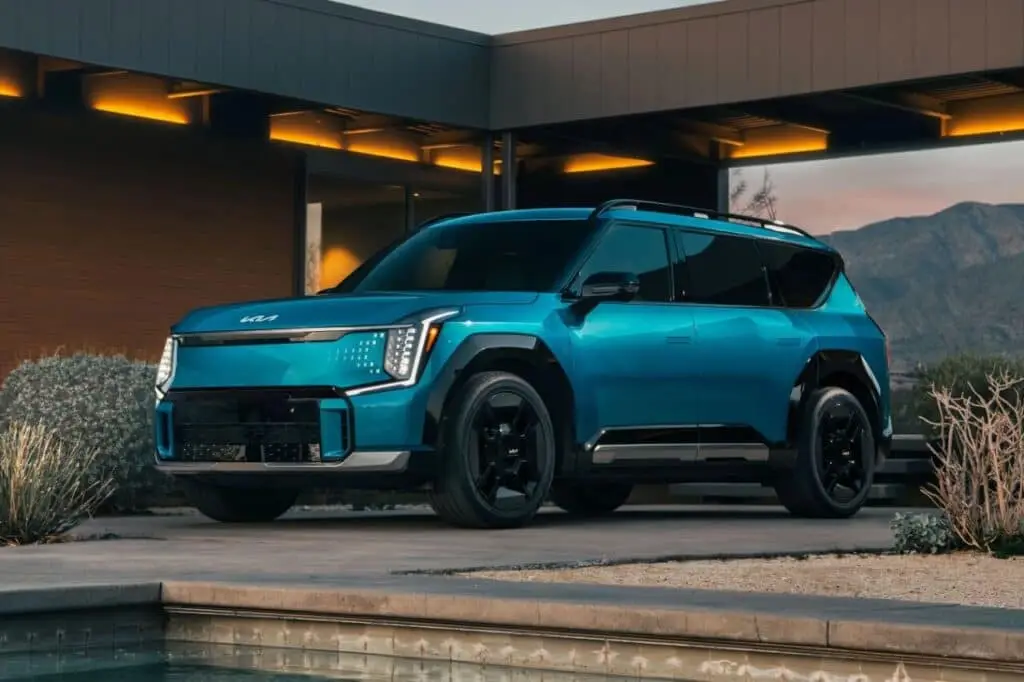Kia has transformed itself over the last two decades from a budget-conscious carmaker into a brand that’s not only competitive but often leading in key automotive segments. With bold styling, increasingly premium interiors, and improved reliability, Kia has made major inroads into the SUV market.
Now, models like the Telluride and Sportage are household names, celebrated for their blend of value, technology, and real-world capability. One of the areas where Kia has made the most dramatic improvement is in drivetrain technology, particularly its all-wheel-drive (AWD) systems.
As consumers continue to prioritize traction, safety, and year-round usability in their vehicles, AWD has become more than just a nice-to-have feature—it’s a critical component for SUV buyers in all climates.
However, not all AWD systems—and not all Kia SUVs—are created equal. While some models deliver refined, responsive, and intelligent AWD functionality that enhances performance and confidence behind the wheel, others have struggled with transmission issues, poor system integration, or outdated technology.
Understanding which Kia SUVs excel in drivetrain execution and which fall short can be the difference between a reliable, long-term investment and a costly automotive headache.
AWD systems are only one part of a broader drivetrain equation, which includes the transmission, engine compatibility, and electronic controls that manage power delivery. When any of these components fail to perform, the whole vehicle can suffer from reduced fuel efficiency to a dangerous loss of traction.
This article takes a comprehensive look at five Kia SUVs that stand out for their excellent AWD systems and five that have developed a reputation for serious drivetrain flaws.
We’ll highlight what makes the best systems so effective, focusing on their responsiveness, driver engagement, and real-world versatility, while also examining the shortcomings of the worst offenders, including mechanical failures, poor software calibration, and limited traction in challenging environments.
This isn’t just about off-road prowess or snowy road confidence—it’s about how a well-executed AWD system and drivetrain architecture can transform a vehicle’s entire personality, from how it handles tight corners to how it behaves under duress.
For buyers considering a used Kia SUV or comparing new models, understanding the brand’s trajectory in AWD and drivetrain development is essential. Kia’s progress has not been linear, and even some newer vehicles have inherited past problems or suffered growing pains due to rapid innovation.
With a clearer picture of which models perform reliably and which may come with mechanical baggage, you’ll be better prepared to choose an SUV that not only fits your lifestyle but stands the test of time.
Whether you’re navigating icy city streets, venturing down forest trails, or simply looking for everyday peace of mind, the right AWD system can elevate your driving experience—and the wrong one can turn it into a source of frustration.
Also Read: 5 Cars That Survive Harsh Winters and 5 That Always Leave You Stranded
5 Kia SUVs with Great AWD Systems
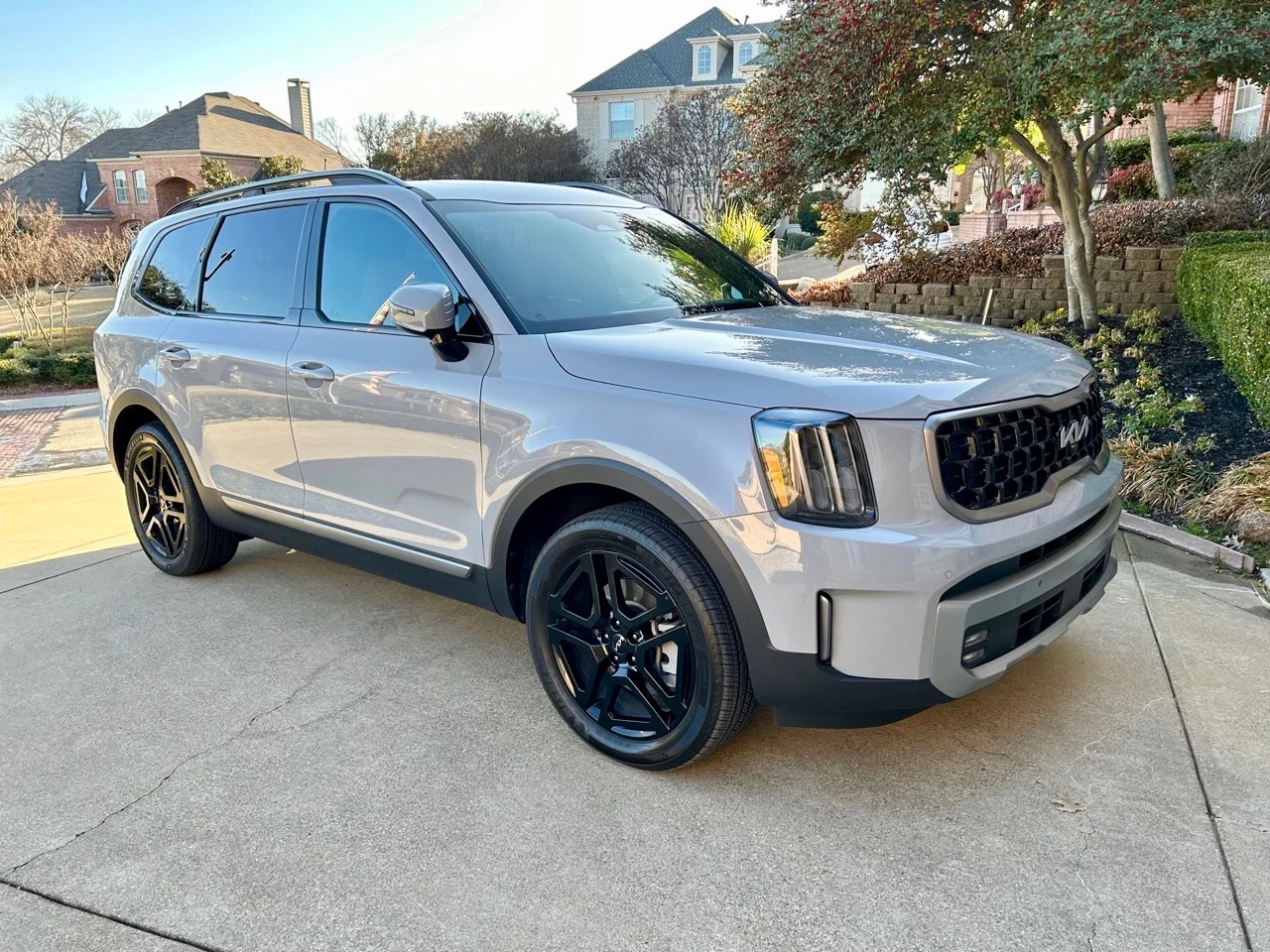
1. Kia Telluride
The Kia Telluride has rapidly become a cornerstone of Kia’s SUV lineup, garnering widespread praise for its mix of upscale styling, spacious interior, and standout performance.
One of the major pillars of its appeal is its advanced AWD system, which sets a benchmark in the mid-size SUV category. The Telluride utilizes Kia’s Dynamax™ All-Wheel Drive, a system that continuously monitors road conditions and driver input to intelligently distribute torque between the front and rear axles.
Unlike traditional part-time AWD systems, Dynamax is predictive rather than reactive, meaning it can detect slippage and shift power proactively to maintain stability and traction. This intelligent behavior provides a significant safety benefit, especially in adverse weather conditions like rain, ice, or snow.
What makes Telluride’s AWD system particularly noteworthy is its seamless integration with the vehicle’s overall driving dynamics. The AWD pairs excellently with the Telluride’s robust 3.8L V6 engine and 8-speed automatic transmission, delivering power smoothly and confidently.
There’s a tangible sense of control behind the wheel, whether you’re navigating tight mountain switchbacks or cruising on the freeway. Drivers have several drive modes at their disposal—Smart, Eco, Sport, Snow, and Comfort—which work in tandem with the AWD system to customize traction and torque delivery.
In Sport mode, for instance, the AWD sends more torque to the rear wheels to provide a livelier, rear-biased driving feel, enhancing cornering confidence. In Snow mode, the power shifts forward to increase front-end traction and reduce slippage on slick roads.
Another element that amplifies Telluride’s AWD effectiveness is its robust chassis and suspension tuning. With 8.0 inches of ground clearance and a multi-link rear suspension setup, the Telluride offers genuine capability for light off-road excursions, such as gravel roads or modest trails.
It also comes with a center-locking differential in AWD models, which drivers can engage manually to split torque evenly between the front and rear, ideal for deep snow or mud.
Unlike many AWD systems in competing SUVs, the Telluride’s setup doesn’t just react to wheel slip—it anticipates it and adapts in real time. When paired with its quiet cabin, user-friendly tech features, and high-end interior materials, the Telluride emerges not only as a luxury contender but as one of the most AWD-capable SUVs in its class.
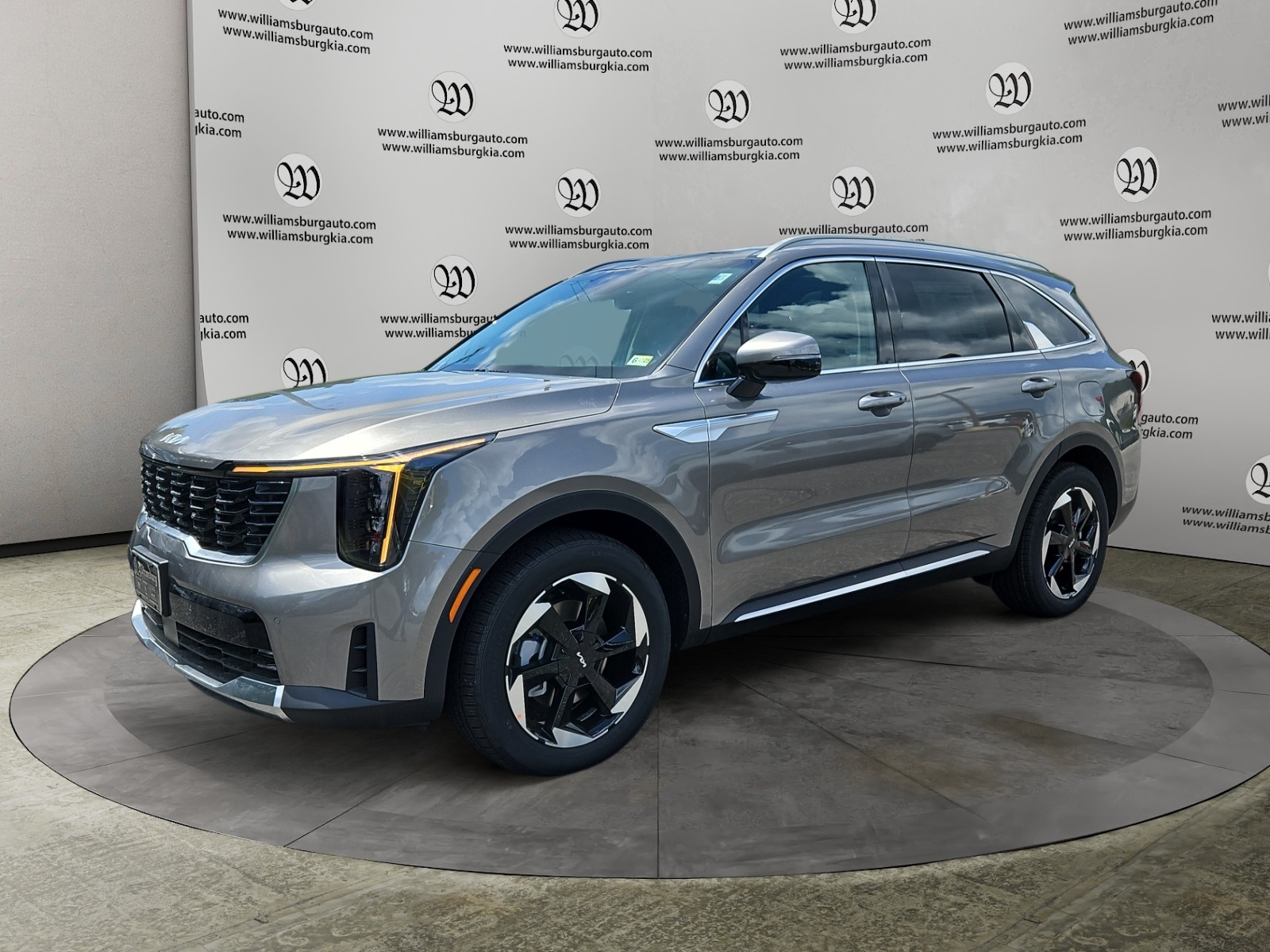
2. Kia Sorento (2021 and newer)
Kia made significant strides with the 2021 redesign of the Sorento, elevating it from a family-friendly crossover to a more versatile, AWD-capable vehicle.
The updated Sorento rides on Kia’s N3 platform, which it shares with the Telluride, offering improved structural rigidity, better weight distribution, and more refined handling. The AWD system in the new Sorento isn’t just a carryover; it’s been upgraded to offer enhanced responsiveness and terrain versatility.
Available on several trim levels—including hybrid and turbocharged variants—the AWD system features torque vectoring and a center-locking differential, which enable the Sorento to adapt fluidly to changing surfaces.
Drivers can select from a terrain management system that includes settings for Snow, Mud, and Sand, providing tangible feedback in challenging environments.
This next-gen AWD implementation is bolstered by improved sensors and electronic integration. The system monitors wheel speed, throttle input, and steering angle to predict when traction loss is imminent, adjusting torque as needed before the driver even feels a slip.
This is especially useful for daily commuting in unpredictable weather, where conditions can change from dry pavement to slick surfaces in an instant. In everyday driving, the AWD-equipped Sorento maintains a composed and confident demeanor.
There’s no excessive understeer or wheel hop—traits that plagued older AWD systems—and the transition of torque between the axles is nearly imperceptible. This means smoother acceleration off the line, better grip in corners, and more assured braking, especially when traveling downhill on loose or uneven terrain.
Beyond the drivetrain, the 2021+ Sorento is a well-rounded package. It offers multiple powertrains—including a 1.6L turbo-hybrid, a strong 2.5L turbo-four, and a plug-in hybrid option—all of which pair effectively with the AWD setup. This combination of power and traction gives the Sorento a rare blend of efficiency and capability.
For drivers looking for a mid-size SUV that can tackle a wintry commute, haul the family to a remote cabin, or confidently take on rough country roads, the AWD Sorento stands out as a compelling and highly capable choice.
Its balance of fuel efficiency, on-road comfort, and off-road competence makes it one of the most well-rounded AWD crossovers in the market today.
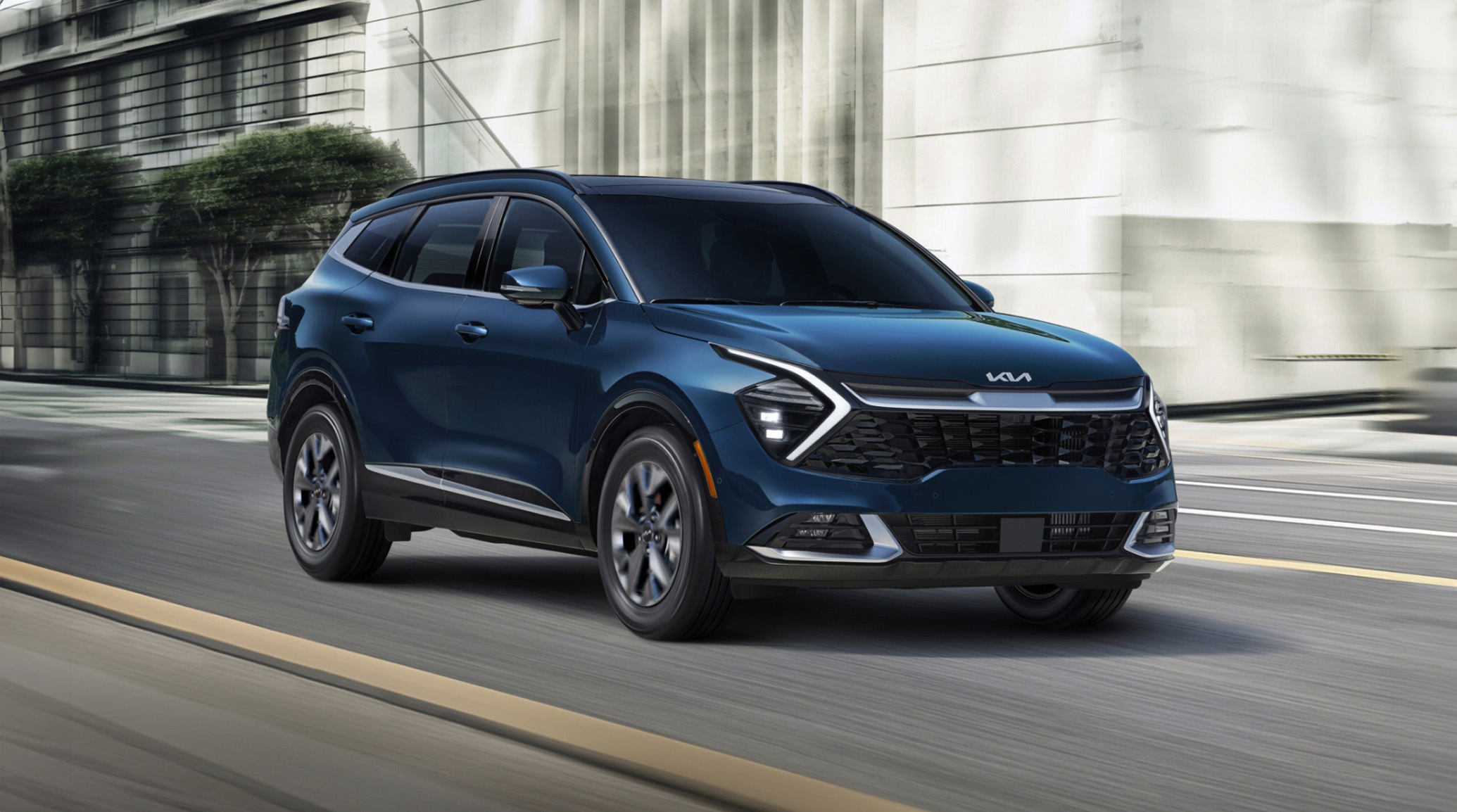
3. Kia Sportage (2023 and newer)
The 2023 Kia Sportage introduced one of the most dramatic redesigns in the model’s history, moving from a modest compact crossover to a bold, tech-forward SUV with real off-road aspirations.
One of the most significant upgrades came in the form of its AWD system, which was reengineered to provide better traction, smarter engagement, and true terrain adaptability.
The electronically controlled AWD includes a locking center differential, something rarely seen in this segment. This feature allows the Sportage to maintain a consistent 50/50 torque split between the front and rear axles, giving it a serious edge on muddy trails or snow-packed roads.
In most compact SUVs, the AWD system is reactive and slow to respond, but in the new Sportage, it’s proactive and consistent.
The AWD capabilities are especially evident in the new X-Pro and X-Line trims, which have been optimized for light off-roading. These models come equipped with all-terrain tires, upgraded suspension components, and additional ground clearance.
Together with the advanced AWD system, these features give the Sportage an outdoorsy persona that can credibly handle dirt roads, snowy passes, and gravel trails.
It’s not a rock crawler by any means, but it offers legitimate utility for weekend adventurers and outdoor enthusiasts who want a daily driver that can also tackle an unpaved detour. The AWD system’s intelligent torque distribution also enhances cornering by applying brake force to the inside wheels, helping rotate the vehicle more effectively through turns.
Inside, the Sportage benefits from high levels of refinement and technology that support its AWD ambitions. Features such as hill descent control, multi-mode traction assist, and a real-time AWD monitor display help drivers better understand and utilize the drivetrain.
The hybrid and plug-in hybrid AWD options also maintain strong performance and efficiency, proving that capability doesn’t have to come at the expense of sustainability.
Whether you’re commuting through a blizzard, driving across an icy bridge, or exploring a dusty back road, the 2023+ Sportage makes full use of its enhanced AWD system to deliver confident, composed, and versatile driving.
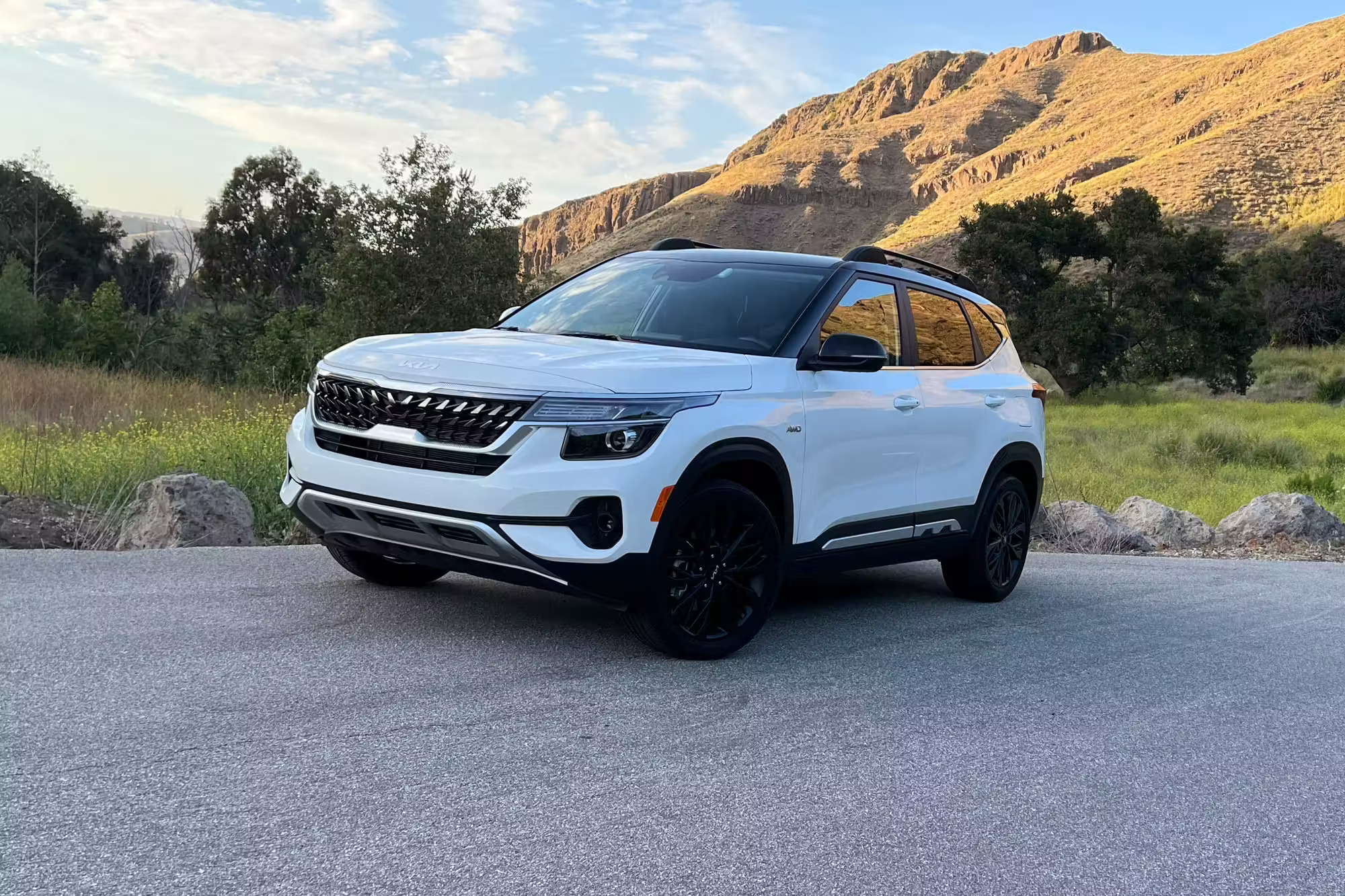
4. Kia Seltos
The Kia Seltos may be one of the more compact SUVs in Kia’s lineup, but it punches well above its weight when it comes to AWD performance. Designed to meet the growing demand for small crossovers with real-world utility, the Seltos features an available on-demand AWD system with a center locking differential.
While it doesn’t boast the same high-tech, torque-vectoring capabilities found in larger models, its AWD system is remarkably competent for the segment.
It’s especially useful in climates that experience heavy rainfall or snowfall, where the extra grip can make a significant difference in safety and stability. The AWD system actively monitors for slippage and engages the rear axle as needed to provide additional traction.
In practice, the Seltos’ AWD system performs with a level of precision and responsiveness that’s uncommon in its class. Whether you’re taking off from a slick intersection or climbing a snowy driveway, the system seamlessly transfers power to maintain momentum.
The AWD lock mode is particularly helpful when conditions deteriorate, allowing drivers to manually split power between the front and rear axles.
This gives a noticeable boost in confidence, especially during low-speed maneuvers on ice or steep gravel paths. Moreover, the Seltos’ compact footprint and relatively light weight enhance the effectiveness of the AWD, making it quick to respond and more nimble in tight situations.
The drivetrain is further supported by the Seltos’ well-tuned suspension and a high driving position, both of which contribute to better road feedback and control. Fuel economy remains competitive thanks to the on-demand nature of the AWD, which disengages the rear axle when it’s not needed to reduce parasitic losses.
This allows drivers to enjoy the benefits of AWD without taking a significant hit at the pump. With a combination of smart design, useful features, and real-world traction benefits, the Kia Seltos proves that small can still mean capable, especially when it comes to mastering all-season driving.

5. Kia EV9 (AWD version)
The Kia EV9 is more than just another electric SUV—it’s a statement vehicle for the brand, and its AWD capabilities are central to its appeal.
Built on the advanced E-GMP platform, the EV9 employs dual electric motors to power all four wheels, enabling not just all-wheel traction but precision-controlled torque delivery that surpasses most traditional systems.
Electric AWD has inherent advantages over mechanical counterparts: it’s quicker to respond, more customizable via software, and more efficient in how it applies torque. The result is an AWD system that delivers instant traction in slippery conditions and confidence-inspiring performance in all types of weather.
One of the major benefits of the EV9’s dual-motor setup is that it can variably distribute torque not only front to rear, but also side to side, depending on driving conditions. This gives the EV9 impressive
stability when cornering, especially in wet or uneven conditions. Unlike combustion AWD systems that must mechanically adjust torque, the EV9 uses sensors and electric signals to make these adjustments instantaneously.
This provides a level of control that makes the driving experience feel more planted, more agile, and more in tune with driver input. In addition, regenerative braking works in harmony with the AWD to manage deceleration in a balanced way, further improving control on downhill or slippery surfaces.
Adding to its AWD excellence is the fact that the EV9 is designed with capability in mind. It features drive modes tailored to various terrain types and even offers towing capacity that rivals some gas-powered SUVs.
While electric vehicles are often viewed through the lens of efficiency and urban utility, the EV9 breaks that mold by offering robust, off-road-ready AWD performance in a large, three-row format. It’s the clearest signal yet that Kia is not just dabbling in EVs—it’s setting a new standard for what AWD electric SUVs can deliver.
5 Kia SUVs with Serious Drivetrain Flaws (Expanded)

1. Kia Sorento (2011–2015)
The 2011–2015 Kia Sorento, while popular for its size, features, and pricing, was plagued with drivetrain issues that severely impacted its long-term reliability.
One of the most common complaints during these years was transmission failure. Owners frequently reported problems such as rough shifting, gear slippage, and transmission hesitation, especially when accelerating or climbing hills.
In many cases, the transmission would enter “limp mode” to protect itself from further damage, severely limiting the vehicle’s speed and power. The issue was so widespread that it led to service bulletins and, in some cases, out-of-warranty goodwill repairs.
However, many owners were still left with expensive repair bills, often amounting to several thousand dollars to replace or rebuild the transmission.
Compounding the problem was the subpar integration of the AWD system during these model years. Kia’s AWD offering at the time was far from the proactive, responsive systems found in later models. Instead, it was slow to engage, lacked any form of terrain customization, and provided limited driver feedback or control.
For drivers who purchased the Sorento expecting reliable performance in snow, rain, or mud, this often led to disappointment. Many reported that the system would either delay activation or fail to deliver power to the rear wheels in time to prevent slippage, reducing confidence during winter driving or while navigating slippery conditions.
Unlike modern AWD systems that work invisibly and seamlessly, the Sorento’s setup felt like an afterthought—a bolt-on solution rather than a truly integrated feature.
The drivetrain design during this generation also lacked mechanical refinement. The six-speed automatic transmission often struggled to find the right gear, especially when paired with the base 2.4L engine. Acceleration was sluggish, and fuel economy suffered due to the constant hunting between gears.
For a mid-size SUV marketed to families and adventure-seekers alike, these issues chipped away at the vehicle’s credibility.
It’s no surprise that many owners looked to more reliable competitors when the time came to replace their Sorento. This era serves as a clear reminder that drivetrain quality can make or break the ownership experience, no matter how many convenience features a vehicle may offer.

2. Kia Sportage (2012–2016)
The 2012–2016 Kia Sportage offered a compelling mix of design, price, and efficiency, but under the surface, its drivetrain presented serious drawbacks.
While the exterior received praise for its aggressive styling and its interior offered decent comfort, the mechanical underpinnings told a different story. The primary culprit was again the six-speed automatic transmission, which failed to keep up with real-world driving demands.
Owners reported erratic shifting behavior, including sudden downshifts, jerky upshifts, and, in some extreme cases, transmission overheating. These problems were not only frustrating but could also compromise safety, especially when accelerating into traffic or overtaking on the highway.
Another major issue stemmed from the AWD system’s lack of consistency and poor integration. Although marketed as a solution for all-weather confidence, the AWD setup in these Sportage models often lagged in response time, with the rear wheels taking a second or two to engage after front-wheel slippage had already occurred.
That delay might not sound like much, but in slick conditions—like snow or wet gravel—it was often enough to cause a loss of control.
The absence of driver-selectable terrain modes or a true AWD lock further limited the system’s utility. Drivers expecting reliable winter performance quickly learned that the system was too reactive and lacked the sophistication needed to inspire confidence in adverse conditions.
Additionally, the drivetrain durability itself came under scrutiny. Many vehicles within this range were affected by engine issues that indirectly impacted transmission performance, particularly with the 2.4L Theta II engine. Engine knock, stalling, and oil consumption problems led to power inconsistencies that forced the transmission to work harder, compounding wear and tear.
Combined with weak AWD implementation, this left the Sportage in a precarious position—it looked capable on paper but delivered a below-average performance that left many owners disillusioned. The model’s potential was undermined by an underdeveloped drivetrain that simply wasn’t ready for the demands placed on a compact SUV in diverse driving environments.
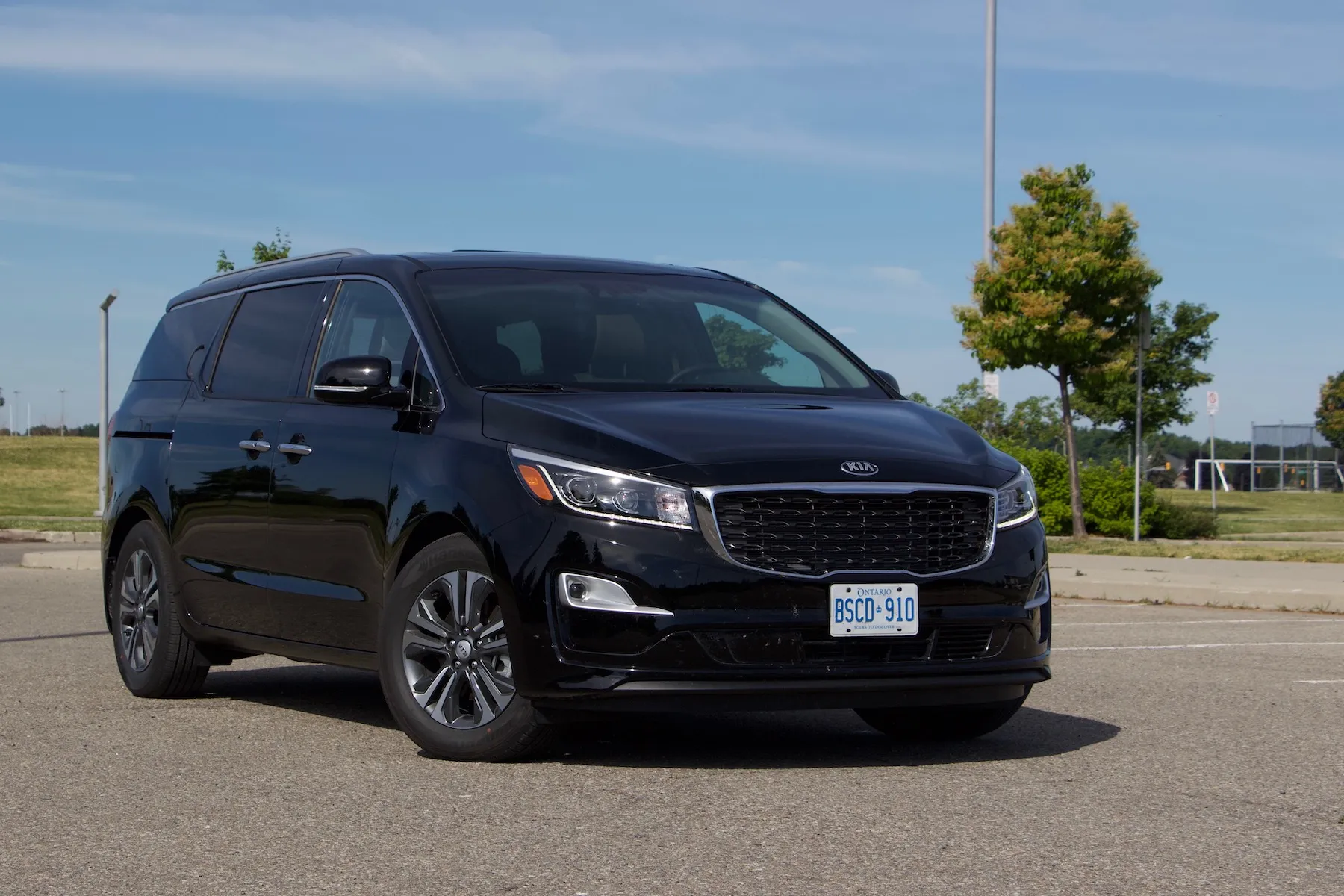
3. Kia Sedona (FWD-Only Limitations with Drivability Issues)
While the Kia Sedona isn’t a traditional SUV, its size, utility, and three-row seating put it in direct competition with large crossovers, and its drivetrain issues are notable enough to warrant inclusion. Unlike many of its rivals, the Sedona was only ever offered with front-wheel drive (FWD), which immediately limited its traction in inclement weather or on steep inclines.
This wouldn’t be a dealbreaker if the FWD system were solid, but unfortunately, the Sedona struggled with torque steer, power delivery inconsistencies, and a transmission that often felt overwhelmed.
The six-speed and later eight-speed automatic gearboxes were frequently reported as hesitant, especially at low speeds. Drivers would notice delays when moving from a stop, sluggish acceleration, and clunky gear changes that disrupted an otherwise smooth ride.
Compounding these issues was the vehicle’s weight and drivetrain layout, which further strained its powertrain components. The Sedona, particularly when loaded with passengers or cargo, became prone to drivetrain stress that could lead to overheating or increased wear on the transmission.
In snowy regions, the lack of AWD was particularly limiting, as the FWD layout simply couldn’t deliver the necessary grip when climbing hills or navigating unplowed roads.
Some owners attempted to compensate with winter tires, but this still didn’t match the confidence that even a basic AWD system could provide. The absence of an AWD option hurt the Sedona’s appeal to families looking for a truly all-weather vehicle.
The driving dynamics of the Sedona were also impacted by the drivetrain’s limitations. On wet or uneven surfaces, the FWD setup often struggled to maintain traction, and the stability control system was forced to intervene aggressively, sometimes reducing engine power to a frustrating degree. For a family vehicle, this could be unnerving, especially during highway merging or rural travel.
The Sedona’s drivetrain didn’t deliver the kind of sure-footed control expected of a vehicle meant to haul seven or eight passengers safely in all conditions. As more competitors offered AWD minivans or crossovers with three rows, the Sedona began to feel outdated and less versatile, with its drivetrain limitations being a key reason for its decline in popularity.
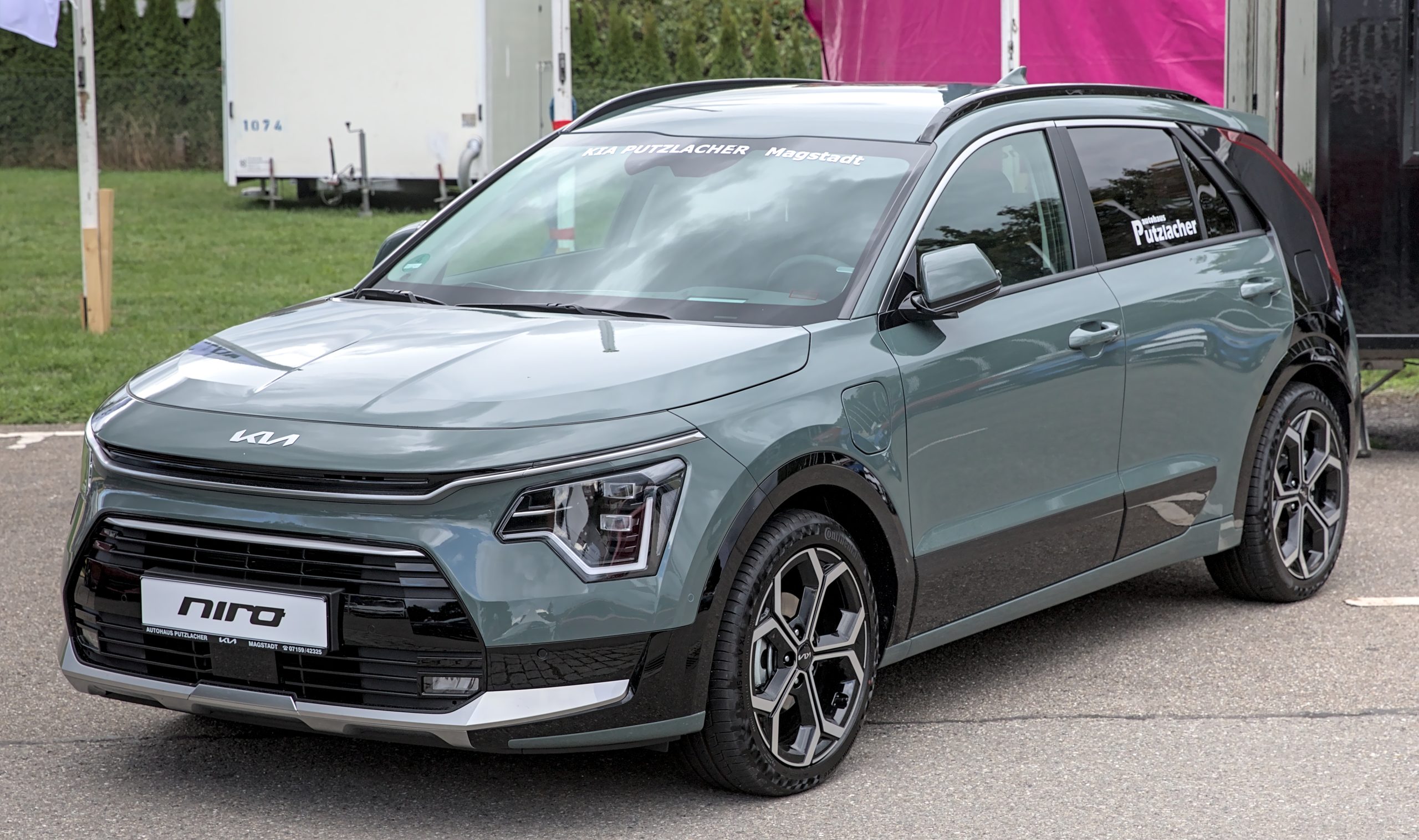
4. Kia Niro (Early Hybrid Models with DCT Issues)
The Kia Niro, introduced as a forward-thinking hybrid crossover, was praised for its fuel efficiency and compact footprint, but it suffered from a drivetrain that often conflicted with its otherwise refined image.
The early Niro models—particularly from 2017 to 2019—were equipped with a dual-clutch transmission (DCT), a design that promised faster shifts and better fuel economy.
Unfortunately, in real-world driving, the DCT struggled with smoothness, particularly at low speeds. Owners frequently reported lurching, gear hesitation, and in some cases, outright failure of the transmission to engage properly at stoplights or in parking scenarios.
This created a sense of unpredictability and made the car feel less refined than competitors that used traditional CVTs or smoother automatic transmissions.
Another significant drawback was the Niro’s lack of an AWD option, a glaring omission for a vehicle marketed as a crossover. The front-wheel-drive layout, combined with a drivetrain that often faltered at low speeds, made it ill-suited for regions with heavy snow or challenging road conditions.
While Kia did eventually introduce AWD in related models like the Seltos and Sportage hybrids, the original Niro left many buyers wanting more.
Its drivetrain performance felt mismatched to the rugged, SUV-inspired styling, and for drivers who needed reliable traction year-round, the Niro was a disappointment. This limited its versatility and appeal outside of mild urban climates where AWD isn’t a necessity.
Additionally, the hybrid system itself, while efficient, wasn’t particularly engaging. The transition between electric and gas power wasn’t always smooth, and when combined with the jerky DCT behavior, it led to a driving experience that felt disconnected and robotic.
Despite impressive MPG figures, the lack of AWD, combined with a quirky transmission and uninspired throttle response, meant that the Niro didn’t quite live up to its promise of being a practical, tech-forward alternative to traditional crossovers.
For many early adopters, the drivetrain issues were dealbreakers, and the model’s long-term reliability concerns, especially regarding the transmission, dented its reputation in a highly competitive hybrid market.

5. Kia Borrego (2009–2010)
The Kia Borrego was an ambitious project, aimed at putting Kia on the map in the full-size SUV segment. Built with a body-on-frame design, available V8 engine, and true four-wheel-drive system with low-range gearing, the Borrego appeared ready to take on the likes of the Toyota 4Runner and Ford Explorer. However, its drivetrain ended up being one of its biggest downfalls.
The transmission, particularly in the V8 variants, was often reported to be clunky and unrefined. Shifts were slow and occasionally harsh, especially under load or towing conditions. The 6-speed automatic lacked the smoothness expected from a vehicle that was trying to play in the near-luxury full-size SUV space.
More problematic were the 4WD system components, which were advanced on paper but unreliable in execution. The electronically controlled 4WD system sometimes failed to engage or disengage properly, particularly in cold weather or when the vehicle had been inactive for extended periods.
Owners reported actuator failures, sensor errors, and drivetrain warning lights that left them stranded or unsure of the vehicle’s capabilities.
When the system did work, it provided decent off-road traction, but the inconsistency in its performance severely undermined the SUV’s credibility as a rugged all-terrain machine. For a vehicle that was supposed to be Kia’s off-road flagship, this was a major blow.
To make matters worse, the Borrego suffered from poor fuel economy, a heavy curb weight, and a drivetrain that felt outdated even when it launched. These shortcomings, combined with a lack of brand recognition in the full-size SUV market, led to dismal sales and the vehicle’s discontinuation after just one model year in the U.S. market.
While the Borrego had potential and some fans appreciated its robust construction and towing ability, the drivetrain flaws—both in mechanical execution and system reliability—were too significant to ignore.
It remains a cautionary tale of how even promising specs can’t overcome real-world shortcomings, particularly when they compromise core performance and reliability.
Also Read: 5 Cars That Keep Working in Texas Heat and 5 That Overheat Instantly
Kia’s journey in the SUV market is a story of both innovation and evolution. Over the years, the brand has introduced vehicles with dramatically improved design, technology, and drivetrain performance.
Models like the Telluride, Sorento (2021 and newer), Sportage (2023+), Seltos, and the all-electric EV9 have redefined what buyers can expect from a Kia SUV in terms of AWD capability.
These vehicles are not only stylish and well-equipped but also genuinely capable in adverse conditions. Thanks to advanced AWD systems featuring predictive torque distribution, center-locking differentials, and terrain management modes, they offer confidence and control whether you’re dealing with heavy snow, slick roads, or loose gravel trails.
Kia has done its homework in recent years, and the results are evident in the driving dynamics and user satisfaction ratings of these newer models.
Yet, for every success story, there are cautionary tales. Earlier models like the Sorento (2011–2015) and Sportage (2012–2016) suffered from significant drivetrain flaws, from transmission failures to unresponsive AWD systems.
These issues weren’t just mechanical inconveniences—they were ownership dealbreakers. Transmission failures led to costly repairs and diminished resale values, while sluggish or inconsistent AWD systems failed to deliver on safety promises.
Vehicles like the Niro hybrid and the Sedona, which either lacked AWD entirely or paired it with unreliable transmission systems, offered limited traction and poor drivability in challenging conditions.
Even the ambitious Borrego, Kia’s first attempt at a full-size SUV with 4WD, fell short due to drivetrain complexity and inconsistency. These shortcomings serve as a reminder that AWD capability is only as good as the entire system supporting it.
For consumers, the takeaway is twofold. First, it’s essential to understand not just whether an SUV offers AWD, but how well that AWD system performs in real-world conditions. Technical specifications on paper mean little if the execution is flawed or unreliable.
Second, when buying used or considering older Kia models, it’s important to research specific production years and known drivetrain issues. Kia has made huge strides in recent years, but its past missteps can still catch unsuspecting buyers off guard.
In closing, Kia’s current AWD offerings demonstrate that the brand is capable of engineering highly competitive and reliable SUVs. Models like the Telluride and EV9 are more than just smart buys—they’re evidence of how far Kia has come. At the same time, earlier failures remind us that evolution often involves trial and error.
With the right knowledge, drivers can avoid the pitfalls of underperforming drivetrains and enjoy the benefits of truly advanced AWD systems. Whether you’re shopping for your first Kia SUV or your next one, understanding the brand’s highs and lows in AWD and drivetrain performance can make all the difference.

